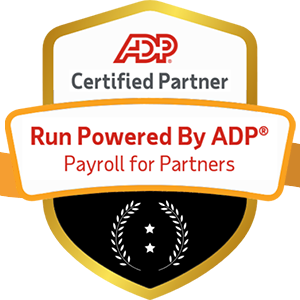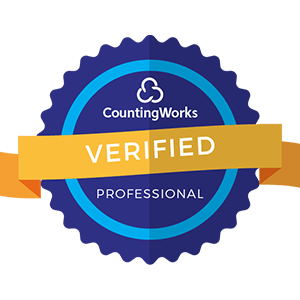Change is inevitable in any organization. As businesses evolve to meet new demands, adopt new technologies, or shift strategies, changes to people, processes, and systems are unavoidable. Managing change effectively is crucial for maintaining operations, engagement, and strategic alignment for human resources, payroll, and finance functions. However, change management can be complex and highly disruptive if not approached thoughtfully.
This comprehensive guide will explore change management best practices for HR, payroll, and finance leaders. We will cover:
- Common changes affecting HR, payroll, and finance
- The impacts of change on these functions
- Critical stages in the change management process
- Strategies and tips for effective change management
- Common mistakes to avoid
Embracing change intelligently can enable HR, payroll, and finance teams to drive successful organizational transformations. Let's dive in!
Common Changes Affecting HR, Payroll, and Finance

Human resources, payroll, and finance functions often face significant changes stemming from organizational shifts. Some of the most common changes include:
-
HR/Payroll system implementations - Upgrading or replacing HRIS/payroll software significantly impacts processes, reporting, data, and user adoption.
-
Organization restructures - involve changes to reporting lines, management spans, and team workflows, impacting HR policies, org charts, and more.
-
Mergers & acquisitions - M&As profoundly affect all systems, processes, policies, and people, combining two entities. HR, payroll, and finance must enable integration.
-
Leadership transitions - New leaders bring new priorities and operating methods, necessitating HR, payroll, and finance adjustments.
-
Compliance/regulatory changes - HR and payroll must adapt as employment laws and tax regulations change. Finance adapts to new accounting standards.
-
Business model shifts - Pivots to the business model like new products/services, customer segments, distribution models, etc., drive workflow, system, and process changes.
-
Location strategy changes - Opening new offices domestically or abroad creates payroll, compliance, and operational complexities.
-
Technology implementations - New software like ERPs force changes to finance and other groups' workflows, analytics, and capabilities.
-
Process optimization initiatives - Projects to improve efficiency, transparency, and service delivery impact how HR, payroll, and finance perform their work.
-
Outsourcing & offshoring - Transitioning functions to third-party outsourcers or offshore operations involves process and operational changes.
Change is constant for HR, payroll, and finance groups today. The functions must be equipped to handle transformation without disruption.
Impacts of Change on HR, Payroll, and Finance
Change significantly impacts HR, payroll, finance, and other groups interconnected with them:
HR Impacts
- Policies requiring revisions to align with changes
- Org charts and reporting lines need realignment.
- Role definitions and requirements may shift.
- Learning and development priorities may pivot.
- Engagement and company culture can suffer if the change is mismanaged.
Payroll Impacts
- System processes and workflows are disrupted during transitions.
- Compliance complexity if tax laws or regulations change
- Staffing needs may fluctuate to support changes.
- Payroll errors are likely to increase during transitional periods.
Finance Impacts
- Disruption to accounting close processes or procedures
- Changes to financial reports and analytics frameworks
- Accounting rule changes may force adjustments.
- Forecasting models may need recalibration.
- Staffing realignments to support new business models
People Impacts
- Anxiety and uncertainty about changes
- Reduced productivity as focus shifts to transition
- Learning curves as employees adapt to new systems and processes
- Resistance to change requires careful change management.
Operational Impacts
- Increased burden on HR, payroll, and finance during transitional phases
- The risk of errors and noncompliance is elevated during changes.
- Disrupted workflows until changes are stabilized
- Staffing gaps if turnover increases due to changes
Navigating changes skillfully is critical for minimizing productivity loss, mitigating compliance risks, avoiding employee disengagement, and enabling successful transformation.
Critical Stages in the Change Management Process

Guiding an organization through significant changes requires meticulous planning and phased execution. HR, payroll, and finance leaders overseeing transformations should follow these change management stages:
1. Prepare for change
- Assemble a change management team representing all affected groups.
- Define the current state, future state, and transition roadmap.
- Conduct a readiness assessment evaluating people, processes, and technology.
- Identify impacts, risks, dependencies, and requirements.
2. Communicate the change
- Determine communication strategy and channels.
- Create targeted messaging for different audiences.
- Equip leaders and managers to convey and reinforce messages.
- Address questions and concerns transparently.
3. Empower people through change.
- Provide learning opportunities to build capabilities needed for change.
- Define and communicate new roles, responsibilities, and processes.
- Contemplate change impacts on employee experience.
4.Implement the change
- Phase rollout thoughtfully following the transition roadmap.
- Continuously monitor impact, risks, adoption, and feedback.
- Refine the approach and provide support to guide successful adoption.
5.Optimize and improve
- Identify lessons learned and areas for improvement post-implementation
- Continuously refine new processes to maximize efficiency.
- Monitor adoption and address obstacles hindering change success.
- Update training and communications based on feedback
- Institutionalize changes through updated policies, job aids, and metrics.
Managing each stage effectively is fundamental to driving successful change. Many initiatives falter when inadequate preparation, unclear communications, or adoption and refinement are neglected.
Strategies and Tips for Effective Change Management
Beyond adhering to change management stages, leaders can employ strategies and tactics to ease transitions for HR, payroll, finance, and the broader organization:
Get buy-in
- Engage stakeholders early to understand their needs and concerns.
- Share the reasons for change and benefits to the business and employees.
- Involve affected groups in designing new processes.
Equip managers
- Provide training to help managers lead teams through change.
- Give managers talking points to convey critical messages.
- Enable managers to answer team members’ questions confidently.
Communicate proactively
- Share information early and often through multiple channels
- Customize messaging and forums for different audiences.
- Be transparent about the impacts and support available.
Acknowledge emotions
- Recognize change can spur difficult emotions like loss, fear, and anxiety.
- Provide forums for employees to air concerns transparently.
- Convey empathy and respond to concerns constructively.
Prepare for the learning curve.
- Phase changes thoughtfully, allowing time for learning.
- Develop training to develop critical new capabilities.
- Define forums where employees can ask questions.
Celebrate milestones
- Recognize critical milestones during transitions.
- Share successes to build confidence and momentum.
- Thank teams for their efforts and highlight achievements
Solicit feedback
- Gather input before, during, and post-implementation
- Be responsive to feedback and continuously improve.
- Update messaging, training, and tools based on learnings
With meticulous planning, robust communications, strong enablement, and compassionate leadership, HR, payroll, and finance can successfully guide their organizations through tumultuous changes.
Common Mistakes to Avoid During Change Management

While thoughtful change management minimizes disruption, organizations commonly make missteps that impede successful transformations:
Lack of preparation
- Failure to devote enough time and resources to analyze impacts and plan thoughtfully
- Underestimating training, communications, and organizational readiness needs
Unclear messaging
- Ineffectively communicating the reasons for change and expected impacts.
- Failing to explain new processes, roles, and expectations post-implementation.
Spotty executive engagement
- Leaders do not visibly role model desired changes themselves.
- Executives are disconnected from the voice of employees during changes.
Poor empathy
- Downplaying or failing to acknowledge people’s emotional needs during transitions
- Pushing forward without considering human impacts thoughtfully
Unrealistic timelines
- Compressing schedules unrealistically increases stress and risks.
- Neglecting change management activities perceived as non-essential
Lack of support
- Not providing enough training or resources to guide people through changes.
- Having no forum for people to seek help during challenging transitions.
Spotty compliance
- Failing to mandate the adoption of process changes post-implementation
- Allowing old habits to persist instead of reinforcing new ways.
No celebration
- Moving onto the next initiative without recognizing change milestones
- Failing to reward teams for embracing difficult transitions
To avoid these common pitfalls, HR, payroll, finance, and other leaders guiding change must plan diligently, communicate compassionately, enable people thoroughly, reinforce new habits, and celebrate shared success.
Navigating Organizational Change with Agility
Change brings opportunity along with challenges. As business evolves, HR, payroll, and finance functions able to master change management can optimally align people, processes, and systems to new organizational demands. With diligent planning, robust communications, celebratory milestones, and compassionate leadership throughout transformations, these groups can drive successful change, minimize disruption, and help their organizations navigate the winds of change with agility.






